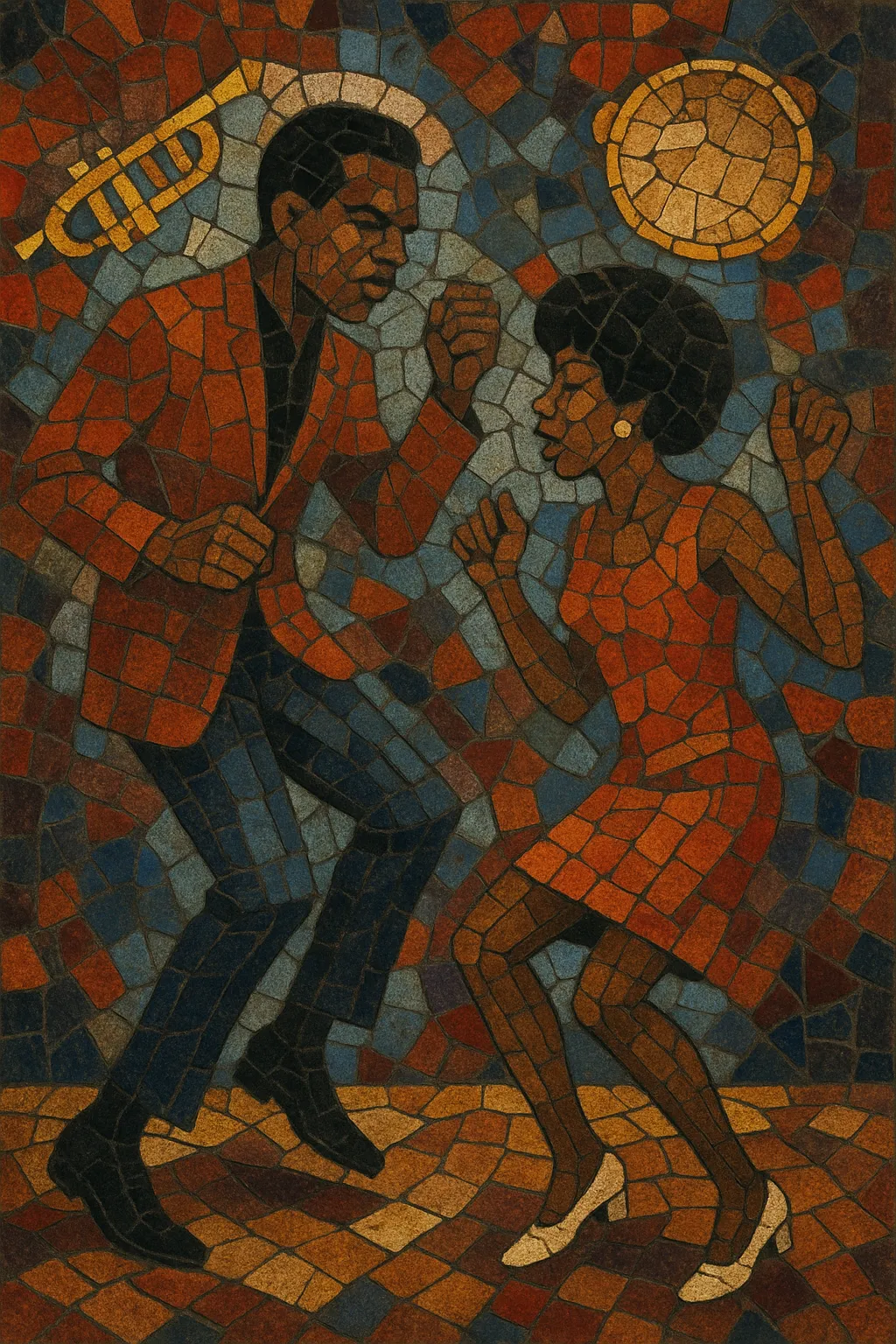Jerk is a mid-1960s American soul and R&B dance-craze micro‑genre built around songs made specifically to accompany “the Jerk,” a sharp, elbows‑pumping dance that swept teen clubs and television shows in 1964–1966.
Musically, jerk records sit in the Motown/Northern soul lane: tight 4/4 backbeats with loud handclaps and tambourine on the 2 and 4, walking or riffing electric bass, bright horn stabs, rhythm‑guitar chops, and concise lead vocals answered by call‑and‑response backing groups. Tempos typically fall in the 110–135 BPM range, and the harmony is straightforward (major‑key I–IV–V and 12‑bar blues variations), keeping the focus on groove and dance instructions.
Lyrically they often include direct prompts—“Do the Jerk,” “Come on, jerk with me”—and crowd‑hyping ad‑libs. The sound is short, punchy, and radio‑ready, reflecting the live, sweaty energy of 1960s dance floors and TV dance shows.
The Jerk dance emerged in African American teen dance culture and quickly crossed over via American TV dance programs and local DJs. As labels realized the dance’s popularity, Motown‑adjacent R&B and soul acts began cutting singles tailored to it—tight rhythms, prominent tambourine, chantable hooks, and explicit dance calls. Songs such as The Larks’ “The Jerk” (1964) and The Contours’ “Can You Jerk Like Me” (1964) codified the feel.
The craze peaked mid‑decade as jerk songs appeared on shows like American Bandstand, Shindig!, and Hullabaloo. The Capitols’ “Cool Jerk” (1966) became the most enduring hit, while Smokey Robinson & The Miracles’ “Come On Do The Jerk” (1964) and Jackie Ross’s “Jerk and Twine” (1964) kept the dance in the charts and on club floors. The production aesthetics—snappy drums, handclaps, tambourine, horn bursts—tracked closely with the broader Motown sound to ensure instant danceability.
Although the original craze was brief, jerk singles became staples for UK mod and later Northern soul DJs, who prized high‑energy 1960s American R&B. “Cool Jerk” enjoyed covers and renewed visibility in later decades (notably by The Go‑Go’s), and the underlying ethos—minimal harmony, kinetic rhythms, chantable hooks—resurfaced in late‑2000s Los Angeles “jerkin’” scenes, feeding directly into the development of jerk rap.


